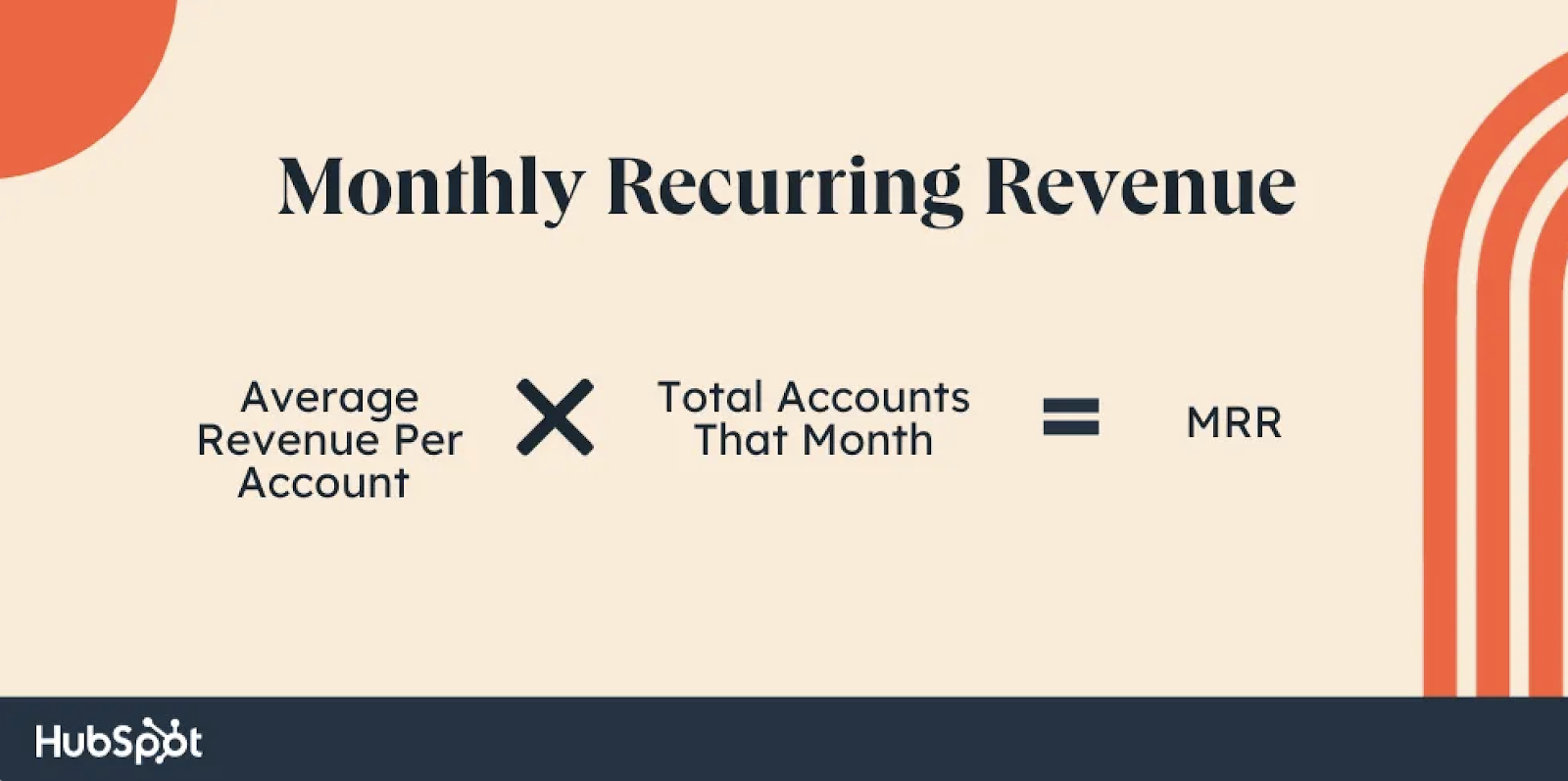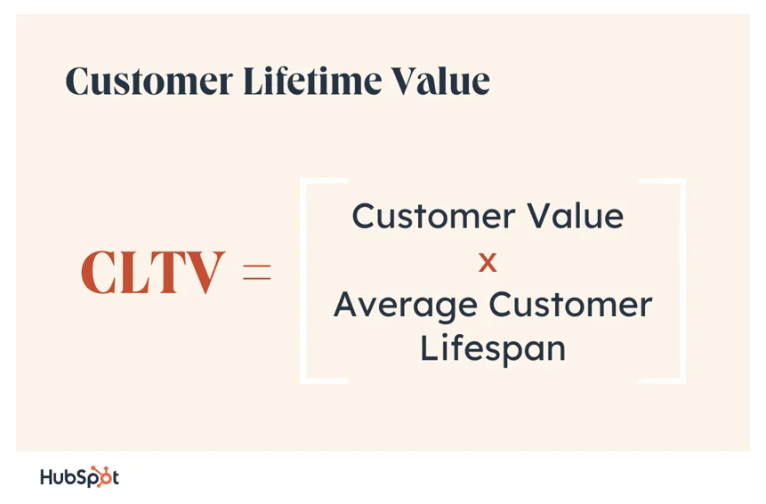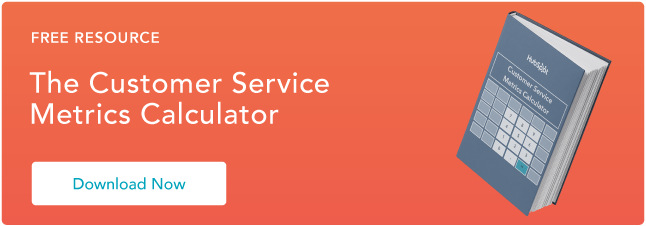Many organizations judge the health of their business by the productivity of their customer support teams.

How many tickets are reps closing? How many emails are they sending? How many product demos have they booked? These metrics help managers determine whether a rep is doing their job well or falling short.
But what if, instead of tracking activity, we measured something totally different?
The old customer success playbook is no longer enough to keep customers happy and coming back. An entirely new school of thought is emerging. It‘s one that’s focused less on making the maximum amount of calls or closing as many tickets as possible and more on developing, maintaining, and strengthening relationships with customers.
And this means measuring success is changing, too. Here are some customer success metrics that will matter more than ever this year — and in years to come.
Customer Success Metrics
- Customer Health Score
- Net Promoter Score
- Qualitative Customer Feedback
- Customer Churn Rate
- Monthly Recurring Revenue
- Customer Lifetime Value
- Customer Retention Cost
- Customer Effort Score
- First Contact Resolution Rate
- Customer Satisfaction Score
- Renewal Rate
1. Customer Health Score
This might sound obvious, but hear me out: You’ve got to look at the big picture — beyond just individual tickets and emails. Are customers actually seeing value from your product or service?
How often is your customer using the product? How successful is your customer after they purchase your product? What type of impact does it have on their business? Has their pain point been eliminated?
Customer support is no longer about getting someone to sign on the dotted line, setting up their new service, and answering their emails and calls. Instead, reps need to ensure that their customers are not only surviving but thriving after their purchase. They must follow up with clients, offer assistance with problems, and help them proactively strategize for the future.
As Forrester's Kate Leggett points out in a blog post, customer success is the driving force behind increasing existing revenue and influencing new sales.
One customer's success can prompt another person to try your product or service in hopes of attaining a similar, successful outcome... but this virtuous cycle only happens when you actively foster and track customer success.
How to Calculate Customer Health Score
To measure customer success, formulate a customer “health” score. What do their finances look like? How many customers do they have? Get a handle on their business' health as it pertains to your product, then monitor the metric over time.
For example, if your business offers a web app for customers to access your product, you may be interested in tracking metrics such as activity on the app, click-through rate for various features, and/or participation on customer forums. Metrics like these can help you get a sense of your customer base’s overall level of engagement with your business.
You can then develop a customer health score by compiling all of these factors and using an index as the actual score metric to keep things consistent and easy to track.
You can also measure your customers' growth. After all, the best sign of business success is growth. Ask your customers whether they are hiring, taking on more business, or improving customer retention rates for a qualitative idea of how successful your customers are becoming.
2. Net Promoter Score
Customer satisfaction is not only about the customer's feelings towards the support rep but also about their feelings towards the brand and the product itself.
When you measure customer satisfaction, you‘re determining how content your customers are when they’re interacting with your business. It should be no surprise that customers who are happier with their experience will be more likely to make repeat purchases.
One of the more popular ways to measure customer satisfaction is through a Net Promoter Score. A Net Promoter Score, or NPS®, simply asks whether someone is likely to recommend your company to someone else.
For example, an associate at a shoe store might ask its customers how likely they would be to recommend them to their friends or family. The rep and their relationship with the customer play a major role in this rating because they’re probably the person the customer has interacted with most frequently.
The benefit of an NPS is that it provides both quantitative and qualitative data about your customers.
Not only does it ask participants to rate their experience on a numeric scale, but it also asks them to provide an explanation for their score. That way, your business can analyze feedback based on the scores, and then examine the customer experiences if you come across abnormal or outlying results.
How to Measure Net Promoter Score
Measuring NPS is relatively easy. You just need access to a form tool that can generate a rating scale response.
Your NPS survey form should only ask one question, “On a scale of 1 to 10, how likely are you to recommend this product or service?” Then, add an open-ended section below it and ask participants to explain their scores.
At the end, your form should look something like this:
3. Qualitative Customer Feedback
Another important element to measure is your customers' feedback. What are they saying about you and the service you provide? What do they like about their connection to the company, and what do they dislike?
The best way to gather this sort of qualitative feedback will depend on your unique business and customer base. Some organizations, such as brick-and-mortar retailers, may benefit from asking customers to share their feedback in person, whereas e-commerce businesses might offer incentives to encourage users to fill out a quick online survey.
But whatever the mechanism, customers need to feel that they have a voice. Offering them a chance to give feedback and provide insights is a great way to build a long-lasting and meaningful relationship.
Customer success managers can determine from qualitative feedback, such as survey responses, how well their reps are working with clients. It might be unpleasant to hear where your onboarding or customer service process is failing, but getting the chance to right a wrong before a customer jumps ship is invaluable.
How to Calculate Qualitative Customer Feedback
The simplest way to collect customer feedback is to send out a survey. Pose a few questions to your customer base and determine how they feel about your customer support reps.
You could also hold a “customer day.” Invite some folks to your office or headquarters for lunch or a meeting, and talk to them one-on-one. Note their facial expressions and body language when they reflect on the service they receive and how they would improve their experience.
Remember: Customer feedback shouldn't be solely about the product — it should also cover how clients feel about the brand and company as a whole.
.png)
Free Customer Service Metrics Calculator
Calculate your business's key metrics and KPIs for customer support, service, and success with this free template.
- Customer Acquisition Cost
- Customer Lifetime Value
- Customer Satisfaction Score
- And More!
4. Customer Churn Rate
Customer churn is a great metric to measure, especially on a rep-to-rep basis. A customer support rep who maintains a healthy relationship with their clients is likely to have a lower churn or cancellation rate. After all, customer support is about relationships, and building rapport makes a huge difference.
How to Calculate Customer Churn Rate
To calculate churn rate, follow these steps:
Step 1: First, determine the timeframe that you'll consider when measuring your data. This can be a week, month, quarter, year, etc.
Step 2: Next, determine how many existing customers there were at the start of this time period as well as the number of customers that churned during the same timeframe.
Step 3: Finally, divide the number of churned customers by the total number of existing customers to find your churn rate.
For example, let's say I wanted to measure the monthly churn rate for my online publishing business. At the start of May, I had 1,000 subscribers, but by the end of the month, 64 of them churned. That would mean that my churn rate for May would be 6.4% (64/1000=.064=6.4%).
When measuring churn rate, remember to exclude the new customers that you acquired during the measurement period from your existing total. These customers will count towards your existing customer total during the next assessment that you perform.
Additionally, be sure to include any new customers who did churn during the time period with your overall churn total. Since the churn for these customers occurred during the assessment period, you should include them when measuring for churn rate.
5. Monthly Recurring Revenue
Monthly recurring revenue, or MRR, is a great metric to use to determine how much your customer base — or its spending — has grown since working with your business. This metric outlines the amount of money that your customers are spending on your products and services each month.
You can compare this value over time to determine whether your customers are succeeding with your products or not. This is particularly helpful for SaaS businesses that operate on a subscription model.
One additional MRR metric that can be calculated is your expansion MRR. Expansion MRR shows you how much additional revenue you're generating from customers outside of their monthly subscriptions. This can give you a good idea of how effective your upgrades and customer loyalty programs are.
How to Calculate Monthly Recurring Revenue
To calculate monthly recurring revenue, you just need to multiply your total number of monthly active customers by your average revenue per user. This should give you an idea of how much money you're generating each month.
For example, if a mobile gaming app has 1,000 monthly active customers and its average revenue per customer is $750, its monthly recurring revenue would be $750,000 ($1,000 x $750 = $750,000 MRR).
To calculate expansion MRR, you'll need to add up all revenue that was generated from non-recurring purchases. That could include upsells and cross-sells, loyalty programs, and add-on purchases that are made by customers on a one-off basis.
By adding these values together, you will see how much your customers are actually spending on your premium offers. If you're doing well, then you know that customers are not only enjoying your product or service but are thriving because of it.
6. Customer Lifetime Value
Customer Lifetime Value (CLV) is one of the most fundamental customer success metrics that you can measure for your business. It shows you the total revenue that you can expect a single customer to generate over the course of their relationship with your company.
Businesses can use CLV to determine the value of their customers over time. If their value increases, then your company knows that your products and services are contributing to your customers‘ success. If it’s decreasing, then your business may need to reevaluate its offers and look for flaws in the customer experience.
How to Calculate Customer Lifetime Value
CLV compares a customer's revenue value to their predicted lifespan. It can be calculated in two steps:
Step 1: Multiply your average purchase value by your average purchase frequency rate.
Step 2: Take that value and multiply it by your average customer lifespan. This should leave you with the estimated amount of revenue that one customer will spend on your business.
For instance, imagine you run a stationery store. Let's say your customers on average spend $50 every time they shop at the store.
They visit the store about three times per month, and it typically takes them about two years before they stop purchasing from your stores. This means that your CLV would be $3,600 ($50 x 3 visits x 24 months = $ 3,600).
7. Customer Retention Cost
While it's great to know that your customers are succeeding with your brand, how can you prove that your customer success efforts are cost-effective?
Customer Retention Cost, or CRC, outlines the total cost of your customer success program and compares it to your total number of customers. This shows you how much money you are spending on each customer to retain them.
CRC takes into account a wide range of expenses. If you run a small local business, it may include efforts such as in-store support for returning customers or a neighborhood leafleting program advertising a new product. Conversely, a SaaS company may invest in email campaigns, small gifts for existing customers, or free early access to new features. Whatever your approach, CRC captures the cost to your business of retaining current customers.
CRC helps businesses invest in their customer success programs. While you may be excited to roll out new initiatives, you want to make sure that you're spending your money in a cost-effective way.
By measuring CRC, your business can make smart investment calls by comparing the potential cost of retaining customers versus the potential revenue you'll generate from a new feature or service.
How to Calculate Customer Retention Cost
To calculate CRC, you'll need to audit the expenses of all of your customer success efforts. This includes expenses spent on payroll for your customer success and service teams, engagement and adoption programs, professional services and training, and customer marketing.
Once you add all of these expenses up into one sum, you can divide that value by your total number of customers to get your average customer retention cost (sum of all expenses / total number of customers = average customer retention cost).
8. Customer Effort Score
How difficult is it for your customers to get help? As customers ourselves, we understand the frustrations that come with navigating through pre-recorded menu options, repeating ourselves as we’re transferred from agent to agent, and struggling to find a contact option in the first place.
In fact, 96% of customers who are faced with these types of high-effort experiences report being disloyal in the future.
So, how can you ensure your customer support team isn’t unintentionally creating these barriers that frustrate customers and ultimately make them disloyal to your business?
You can track a customer effort score (CES) to measure how easy it is for your customers to get the help they want and need. The metric also helps you predict customer loyalty: Gartner found that CES is 40% more effective at predicting customer loyalty than customer satisfaction.
CES is measured by surveying customers, often once their issue is resolved. Here’s an illustrative example from the customer support platform Nicereply:
By tracking CES, you can determine where you’re unintentionally making things difficult for your customers and adjust as needed to make it easier for them to get support. As a result, you’ll create delightful customer experiences that increase loyalty.
9. First Contact Resolution Rate
One of the most common customer needs is time. Customers want their problems resolved quickly, so they can get back to pursuing their goals. If they're constantly waiting for your support team, this adds a great deal of friction to the customer experience.
With this in mind, it's important to measure your first contact resolution rate. This is the percentage of customer service cases that are resolved within the first interaction. If this number is high, that means your team is not only responding to customers but addressing their needs promptly as well.
How to Measure First Contact Resolution Rate
To calculate first contact resolution rate, you'll need to divide the number of service tickets that are closed after the first interaction by the total number of service cases your team received.
For example, if you manage the customer support team for a small SaaS business that has received a total of 100 service requests, and 78 of those requests were resolved after the first customer interaction, that would mean you had a First Contact Resolution rate of 78%.
To measure this, you'll need customer service tools to help you keep track of your incoming cases. A ticketing system can set up digital records of your cases that are easily categorized and stored. Similarly, a help desk can provide the reporting tools you need to calculate first contact resolution rate without having to manually crunch the numbers.
10. Customer Satisfaction Score
Customer satisfaction score, or CSAT, is similar to NPS, but it has one major difference: Instead of asking participants to rate their likelihood of recommending the brand to others, CSAT asks them to simply rate their experience with the company. This gives businesses a snapshot idea of how customers feel after completing an interaction with the support or success team.
How to Measure Customer Satisfaction Score
Like NPS, customer satisfaction score requires a survey to measure it. However, you‘ll need to trigger this survey after a customer interaction, so you can get the most accurate response from your participant. Remember, this metric should analyze the customer’s immediate reaction to an individual experience, not their overall perception of your brand.
Step 1: Once you have your form set up, you can calculate CSAT by dividing the number of positive scores (scores six to 10) by the total number of scores you captured.
Step 2: Then, if you multiply your result by 100, you'll have the percentage of customers who are happy with their brand experience.
For example, imagine you run a boutique marketing agency. To determine CSAT, you might ask your clients to fill out a brief form immediately after completing an engagement. Next, let’s say that you receive a total of 50 responses, and 40 of them are positive. That would indicate that your CSAT score would be 80% (40/50 = .80 x 100 = 80%).
11. Renewal Rate
If you're a SaaS business, this may be one of your most important metrics. After all, SaaS businesses operate on a subscription model, so it's no wonder that customer success would be determined by the number of people who keep signing up and using your product.
If your renewal rate is high, this means that your team or product is succeeding in driving customer success. After all, a high renewal rate suggests that customers are willing to commit to your business for another year/contract, so they can continue gaining benefits from your company.
If your renewal rate is low, this is an excellent indicator that customers aren't succeeding when using your product. This presents an opportunity for you to invest in customer success programs as well as product development, to create a more delightful, long-term experience for your users.
How to Measure Renewal Rate
Renewal rate can be calculated like so:
Step 1: Divide the number of customers who renewed their subscriptions by the number of users who were up for renewal.
Step 2: Multiply your result by 100 to determine your renewal rate.
If you're not a SaaS company, you can look at product expiration dates. Use your CRM to see when a customer bought a product, then set a reminder to review the customer's account when their product should be replaced. If they purchased from you again, you know they “renewed” with your business.
What does this look like in practice? Say you run a small store selling pet supplies. When a customer buys a one-month supply of cat food, that suggests that they’ll likely run out and need another package a month later.
If they, in fact, return after a month and buy another package of cat food from your store, that means they “renewed” — that is, they made a repeated purchase as expected.
Instead of making calls for the sake of making calls, customer support reps are instead turning their attention to relationships and what happens after they make a sale. The metrics that matter have shifted, and the customer success organization is adjusting accordingly. These metrics are worth watching as you help your customer success team ramp up.
SaaS Customer Success Metrics
SaaS customer success metrics are more specific and focus on data that is specific to the software industry. Several of the metrics listed above, such as renewal rate and MRR, do apply to SaaS specifically, but we’ve added a few more below that will provide a more holistic view of this business model.
12. Product Usage Rate
The more customers use your product, the more valuable it is to them. (Unless your product is similar to Hinge, where the customer’s goal is to delete the app as quickly as possible.)
With just about every SaaS product, your customer service team will be able to track how often each user accesses it. Ideally, you want your overall product usage rate to progress over time until it reaches your ideal usage frequency.
To calculate this metric, decide which intervals you want to measure, i.e., daily, weekly, monthly, etc. Then, identify what percentage of your customers are achieving each one.
If your business sells a fitness app, for instance, you might want to track how often users access the app, how often they log a new fitness activity, or how often they use other key features every day, week, or month.
.png)
Free Customer Service Metrics Calculator
Calculate your business's key metrics and KPIs for customer support, service, and success with this free template.
- Customer Acquisition Cost
- Customer Lifetime Value
- Customer Satisfaction Score
- And More!
13. Average Time on Platform/Average Time in Application
Understanding how much time your customers spend using your software can tell you a detailed story about the extent to which your product is integrating into their day-to-day lives.
This metric not only helps you understand the customer’s behavior but it’ll also help you set a benchmark for how long a typical customer should spend using your product. That way, you can make improvements to your software over time.
For example, many social media apps are designed to maximize time spent on their platforms, whether that’s through push notifications reminding users to check out the latest new content or recommendation algorithms designed to keep you scrolling through related posts.
Tracking how long people spend on these social media platforms is an important way for app designers to better understand their users’ behavior and usage patterns.
14. Active Users
If your company is focused on growth, this SaaS customer success metric will be critical to your growth strategy. You can measure active users by adding the number of customers who use the product at a particular frequency — daily, weekly, and monthly are some of the most common.
It’s particularly helpful to track Active Users if you’re concerned that many of your customers aren’t actually using your product all that often.
For example, if you sell a language-learning app and currently have 1,000 customers, you might assume you’re doing pretty well. But if it turns out that only 100 of those customers actively use the app, you might not be adding as much value (or helping people learn as effectively) as you thought.
15. Free Trial Conversion Rate
Freemium options are a staple in the SaaS industry as they drive user adoption quickly, but how can you measure their success? Free trial conversion rate is a must-have measurement for any SaaS company.
This metric reveals how well customers are switching from the free version of your product to the version that generates revenue for the business.
You can measure free trial conversion rate by dividing the number of customers using the free trial by the number of customers who converted to a paid subscription. You can measure this data point on a monthly, quarterly, or annual basis.
Free trials are common in SaaS businesses, but any company can leverage a similar approach to driving growth.
For example, If you run a grocery store, you might opt to give away free samples of a new product. In that case, you might measure how many customers who tried a free sample ended up buying the product. If 100 customers tried the free sample and 20 ended up purchasing it, that would mean you had a conversion rate of 20%.
Success Metrics Dashboard
After deciding which metrics to use as you measure customer success, you’ll need to find a place to track and view all of this data. A customer success metrics dashboard is the ideal solution. There are several types of dashboards available, and we’ve listed a few below, including HubSpot’s Dashboard and Reporting software.
Customer Support Dashboard Example
HubSpot’s Dashboard and Reporting software is both powerful and accessible. Everyone who needs to keep track of customer success, from analysts to senior leaders, can look to this tool as a single source of truth. The best part of this dashboard is that it doesn’t limit you to just one instance — you can create up to 300 instances, giving every team a customized peek into the customer experience.
Customer Success KPI Dashboard Example
Keep your customer service and support team on target each quarter with a customer success KPI dashboard like this one. It displays relevant metrics like average response time, first call resolution, and NPS scores. You can even track top-performing reps and celebrate their wins.
Customer Experience Dashboard Example
This dashboard example by Tableau presents several metrics at once, including the number of support requests received and how that compares year-over-year. If your team is making decisions about customer success strategy, try a dashboard like this one to get a broad overview of your company’s progress.
A Successful Business Depends on Customer Success
Whether you’re in a B2B or B2C industry, customer success is a key determinant of how far your company will go.
Revenue and even market share are dependent upon whether or not your customers are satisfied with the value they receive from your products — and the only way to know if they are is to measure their success. Use the metrics, dashboards, and tips I’ve shared here to kick your customer success strategy into gear and help your business reach new heights.
Net Promoter, Net Promoter System, Net Promoter Score, NPS and the NPS-related emoticons are registered trademarks of Bain & Company, Inc., Fred Reichheld and Satmetrix Systems, Inc.
Editor's note: This post was originally published in January 2020 and has been updated for comprehensiveness.
![→ Download Now: Customer Service Metrics Calculator [Free Tool]](https://no-cache.hubspot.com/cta/default/53/e24dc302-9dc2-466f-a5ca-ab4e08633c0f.png)










